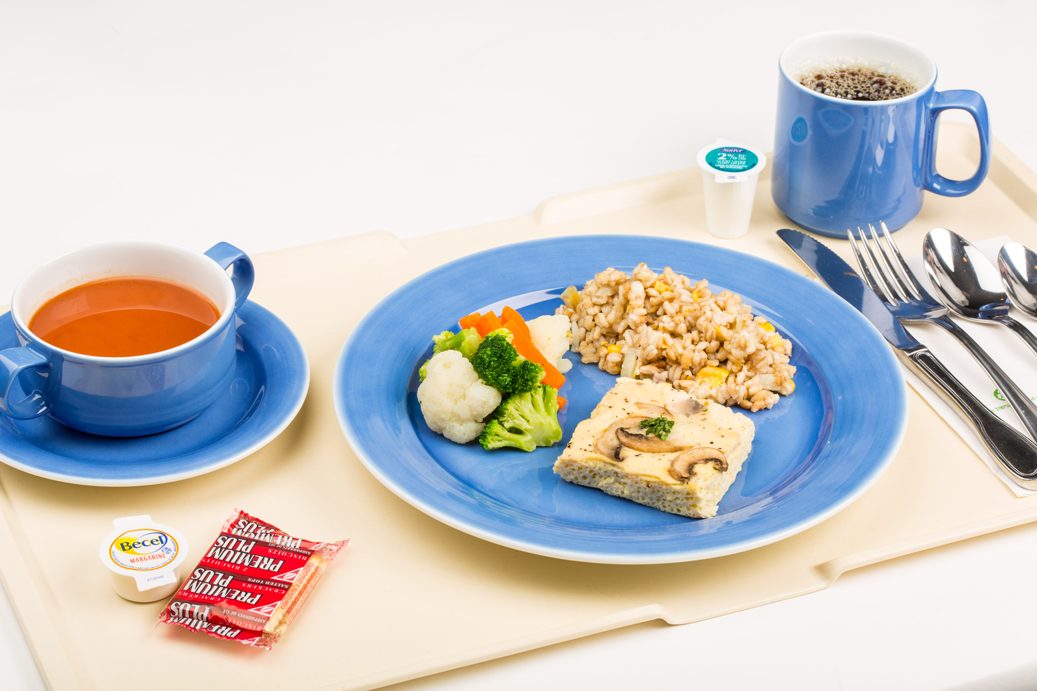How To Improve Food Intake in People with Vision Impairment?
Maximizing patient consumption and satisfaction is a large part of food services. Food services in health care settings are responsible for providing the necessary nutrition for the patients to recover and improve their health status. Without the basic nutrients in the body, how can the patients be strong enough to receive and respond to other health treatments? Maximizing food intake is especially important for patients at risk for malnutrition; for example patients with vision impairment. Patients with vision impairment may have difficulty seeing their meals and distinguishing the food from the plate from the table or tray. Eating may be difficult or even worse, embarrassing, leading to decreased nutritional status. CNIB (formally known as the Canadian National Institute for the Blind) recommends contrasting the colours of the food, plate, and table (ie. tablecloth, tray, placemat) to increase visibility. This allows patients to better identify the different items in front of them and be able to feed themselves.
A study by Dunne and colleagues in 2004 was conducted to see if food intake would change depending on the colour of the plate in patients with Alzheimer’s in a long term care setting. The initial experiment compared food intake on bright red plates to white control plates, which showed an increase in food intake by 24.6%. A follow-up study investigated food intake on bright blue, pale red, and pale blue plates compared to white control plates. The bright blue plates showed 25.1% increase in food intake compared to white plates. An increase in food intake in some of the participants was also seen in the low colours but was not statistically significant. This study concluded significant increases in food intake observed with high-contrast coloured dishware.
Burlodge Blue is a line of china that is specially designed for people with impaired vision, including those with Alzheimer’s disease. The bright blue colour was chosen for the dishware based on its high colour contrast with the food (few foods are blue) and the table (i.e. tablecloth, tray, placemat). One study by Singh in 2006 reported the colour red stimulates appetite; however there is more literature that suggests that it actually reduces food intake by acting like a stop sign.
In addition to visual impairment, which is a common symptom of Alzheimer’s disease, Alzheimer’s patients can also be easily distracted during meal times. Nell’s thesis from 2013 concludes that white tablecloths are least distracting for Alzheimer’s patients. White also provides a clear contrast to blue dishware. Traditional round plates were chosen for this line of china due to their familiarity (therefore less distracting). Burlodge Blue also includes a plate design with a lip to assist in self-feeding. Patients with Alzheimer’s disease tend to use one utensil (to avoid confusion), therefore a lipped design may facilitate scooping.
Everybody would prefer to be able to do things themselves without assistance or the appearance of assistive devices. It decreases stigma and gives individuals a sense of independence. Something as simple as changing the colour of the plate could do wonders for providing independence and improving nutritional status.











